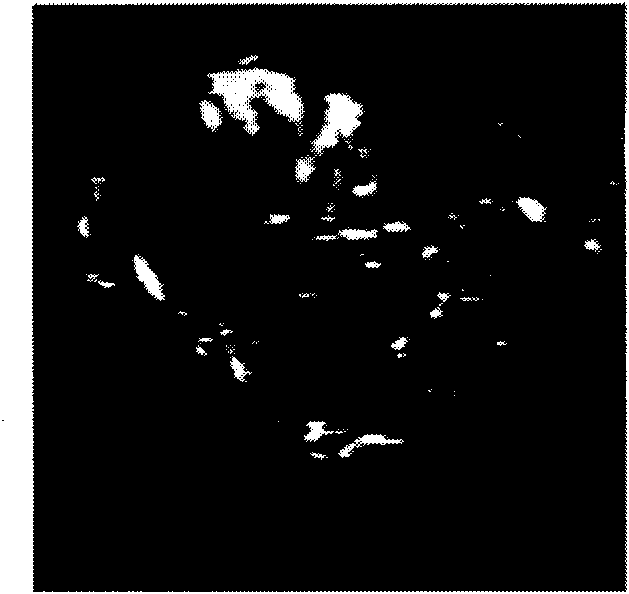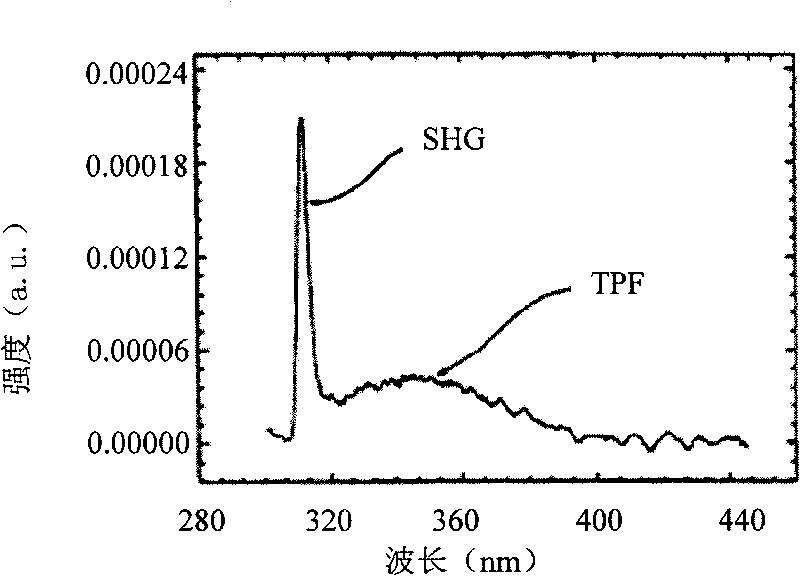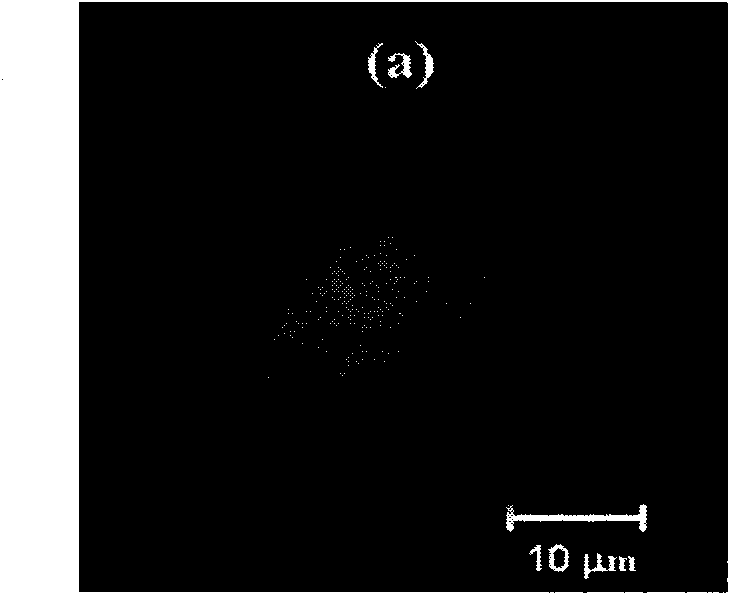Method for imaging live nucleus and cytoplasm and application thereof in monitoring live nucleus and cytoplasm signal pathway
A technology of living cell nuclei and living cells, applied in biological testing, material inspection products, fluorescence/phosphorescence, etc., can solve the problems of cumbersome operation of optical path changes, difficulty in cell line selection and maintenance, and impossibility of dynamic research
- Summary
- Abstract
- Description
- Claims
- Application Information
AI Technical Summary
Problems solved by technology
Method used
Image
Examples
Embodiment 1
[0053] The first embodiment of the present invention is to use the method of the present invention to observe the translocation process of NF-κB marked by gene recombination technology GFP between nucleoplasm and tumor necrosis factor (Tumor necrosis factor) in human lung adenocarcinoma cells (ASTC-a-1). NecrosisFactor, TNF) as an activator of NF-kB signaling pathway.
[0054] Culture of human lung adenocarcinoma cell (ASTC-a-1): cell culture medium is RPMI 1640, add 15% fetal bovine serum, 2mmol / L glutamine (Glutamine), 25mmol / L HEPES, 100IU / ml penicillin and 100mg / mL streptomycin. For cell transfection, 30%-50% confluent human lung adenocarcinoma cells were co-cultured with a suspension of Lipofectin reagent and a sufficient amount of recombinant plasmid vector (gifted by Professor Schmid, University of Vienna) for 6 hours, and then supplemented with an appropriate amount of fresh culture medium for expansion. Increase culture. The process of transfection is the process o...
Embodiment 2
[0058] The second embodiment of the present invention is to use the present invention to observe the translocation process of STAT marked by the gene recombination technology GFP between nucleoplasm in human lymphocytes - Interferon (Interferon) is used as the activator of the signaling pathway STAT.
[0059] Lymphocytes were used as host cell lines for validation of the JAK / STAT signaling pathway. Whole blood comes from healthy blood donors at the blood bank, and lymphocytes are obtained from heparin-anticoagulated blood separated by lymphocyte separation fluid. RPMI1640 was used as the lymphocyte culture medium, and 10% fetal bovine serum, HEPES, antibiotics, interleukin-2 (IL-2), and phytohemagglutinin (PHA) were added. Construction of the transfection vector: the genes of the STATs family (STAT 1-6) were cloned into the carboxyl terminus of the plasmid vector pEGFP-C1 (Catalog #6084-1, Clontech). Lipofectin reagent and a sufficient amount of recombinant plasmid vectors we...
Embodiment 3
[0063] Culture of human skeletal muscle cells: cell culture medium is DMEM, add 10% fetal bovine serum, 5uM growth factor (GrowthFactor), 2mM glutamine (Glutamine), 25mmol / L HEPES, 100IU / ml penicillin and 100mg / mL streptavidin white. For cell transfection, 30% to 50% confluent human skeletal muscle cells were co-cultured with a suspension of Lipofectin reagent and a sufficient amount of recombinant plasmid vector for 6 hours, and then an appropriate amount of fresh culture medium was supplemented for expansion culture. Construction of the transfection plasmid: the androgen receptor gene was inserted into the amino terminal of the commercialized EGFP plasmid vector, the green fluorescent protein (GFP) gene was recombined with the androgen receptor gene, and the combined gene (plasmid vector) was transfected Transfection into skeletal muscle cells, the expression product of this foreign gene in skeletal muscle cells is the fusion protein of androgen receptor and GFP. When using...
PUM
| Property | Measurement | Unit |
|---|---|---|
| Wavelength | aaaaa | aaaaa |
Abstract
Description
Claims
Application Information
 Login to View More
Login to View More - R&D
- Intellectual Property
- Life Sciences
- Materials
- Tech Scout
- Unparalleled Data Quality
- Higher Quality Content
- 60% Fewer Hallucinations
Browse by: Latest US Patents, China's latest patents, Technical Efficacy Thesaurus, Application Domain, Technology Topic, Popular Technical Reports.
© 2025 PatSnap. All rights reserved.Legal|Privacy policy|Modern Slavery Act Transparency Statement|Sitemap|About US| Contact US: help@patsnap.com



